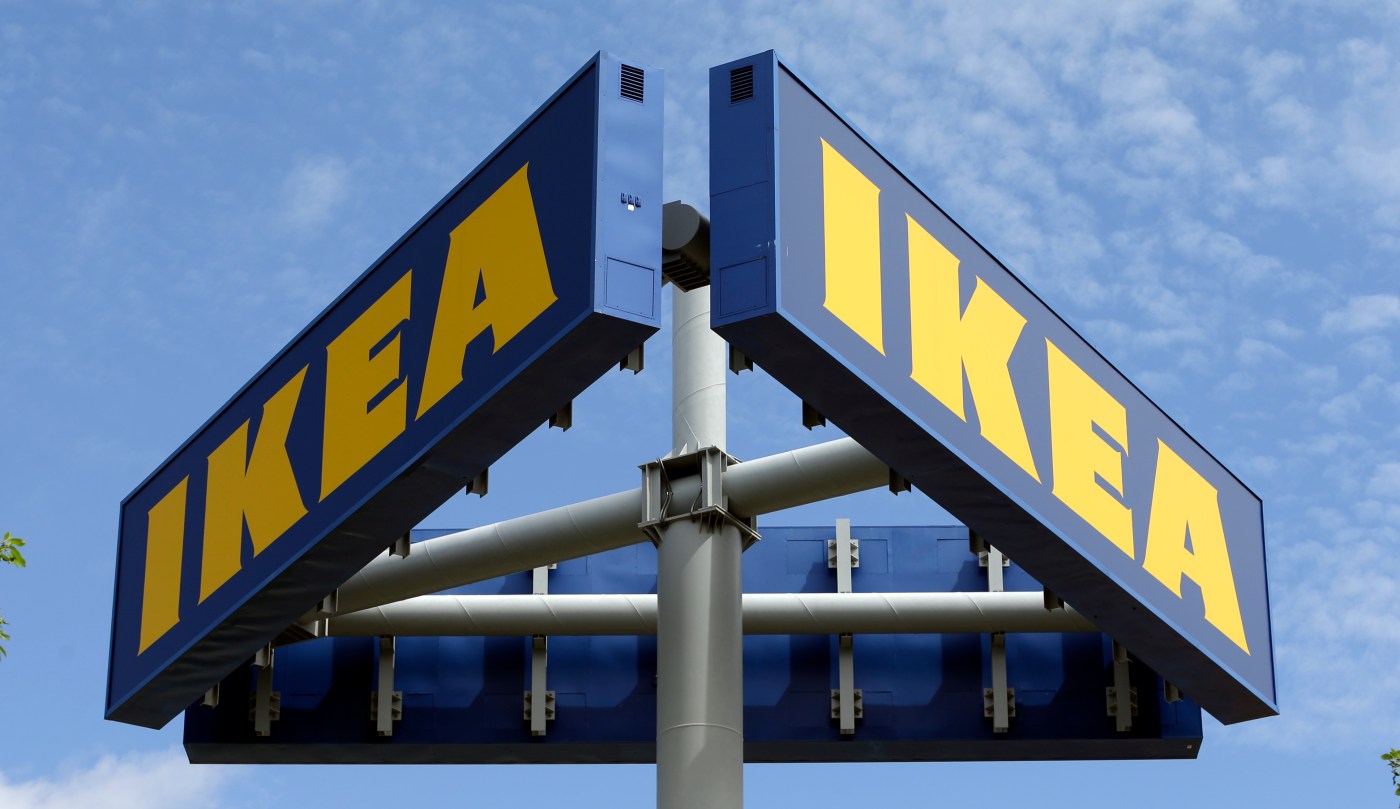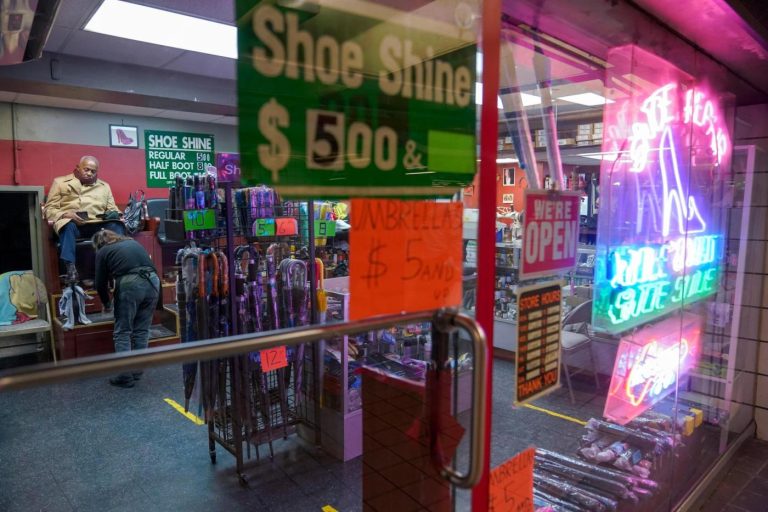By Matthew Boyle | Bloomberg
Ikea’s workers were quitting in droves in the US. In the UK and Ireland, half of all new hires were leaving before their first anniversary. Globally, each departure cost Ikea $5,000 or more to replace.
To stem the bleeding, the Swedish furniture behemoth needed to figure out what was making its store workers so unhappy — and fix it fast. By 2022, more than 62,000 employees were departing a year for various reasons, equating to about a third of its workforce, and the pandemic-era labor shortage made it difficult to replenish its ranks.
Workers “suddenly became very scarce,” said Jon Abrahamsson Ring, chief executive officer of Inter Ikea Group — the umbrella entity that oversees Ikea’s store franchising, product design and supply chain — in a recent interview in New York. Ikea focused on things that many businesses talk about doing but struggle to actually implement: Boosting pay, increasing flexibility for frontline employees and using emerging technologies to make things easier on workers and their customers.
The results were stark: Voluntary turnover in the US dropped to about a quarter of employees by the end of 2023, from a third a year earlier. Globally, across the parent company’s more than 600 stores and warehouses, the quit rate fell to 17.5% in April from 22.4% in August 2022. While voluntary attrition has fallen in many white-collar occupations as hiring has slowed, employment in the retail sector has continued to trend up in recent months, making Ikea’s progress notable.
Retail jobs are often marked by low pay, erratic schedules and irate customers, which helps explain why the quit rate for retail workers is more than 70% higher than in other US industries, according to a 2022 report by McKinsey & Co. Half of them are considering leaving their job, McKinsey found, and of those, half want to ditch retail entirely. The situation isn’t better in other parts of the world: UK retailers typically need to replace one out of every two workers each year.
“Attracting, developing, and retaining frontline talent must become a top agenda item for retail CEOs,” the McKinsey report said, noting the challenge has only grown amid inflation and an environment where labor unions are increasingly flexing their muscles.
Privately held Ikea, whose 473 stores in 63 markets employ nearly 200,000 people, historically lost fewer workers than its industry peers, thanks in part to a Nordic corporate culture that’s known for being warmer and fuzzier than, say, US discount giants Dollar General Corp. or Walmart Inc. But managing a sprawling, global workforce in an era where work-life balance has become mandatory for many people isn’t easy, and signs emerged that it wasn’t all Swedish meatballs and bliss amid Ikea’s endless aisles of Billy bookcases and Stockholm rugs.
In 2018, a coalition of unions accused local Ikea managers of quashing organizing efforts at stores in the US, Ireland and Portugal. They filed a joint complaint with a branch of the Organization for Economic Cooperation and Development alleging that senior leadership “ignored red flags” about claims that workers’ rights were being trampled. “I never thought that Ikea would allow supervisors to intimidate and interrogate us,” Nancy Goetz, a worker in Ikea’s Stoughton, Mass., store, said at the time. “I expected more from Ikea.”
A wave of worker protests ensued. In Poland, employees were peeved that a wage hike was pegged below the rate of inflation. In South Korea, unionized workers said they received subpar treatment compared with their peers in other countries. In the US, the company had to apologize for serving fried chicken, collard greens and watermelon at a Juneteenth event for Atlanta employees. (One former Ikea worker went viral by posting videos as “Angry Retail Guy” that mocked clueless managers and shoppers alike.)
After several years of talks between the union coalition and Ikea, the company last year agreed in principle to let workers organize and allow store access to union representatives. Notably, though, the parties couldn’t come to terms on allowing labor reps to enter US stores.
“IKEA respects the rights of co-workers to join, form or not to join a union of their choice without fear of reprisal, interference, intimidation or harassment,” a spokesperson said. “The company is committed to maintaining an environment of mutual respect and ensuring all co-workers’ rights are protected irrespective of their preference and choice concerning unionization.”
While the talks dragged out, unhappy Ikea workers started looking elsewhere. Then, the pandemic hit, and labor shortages made finding and holding onto people even more challenging. “There was a shortage of staff for entry-level jobs,” said Ring.
The so-called Great Resignation impacted all industries, but few gave workers more reasons to flee than retail. Stores had to transform into online fulfillment centers overnight, while supply-chain bottlenecks and record inflation made everyday necessities scarce and more expensive, angering shoppers, who often took out their frustrations on employees. So-called “hero” bonuses soothed the pain, but didn’t last. Workers got disgruntled, and started leaving for other gigs.
‘Unhappy Workers’
It was a far cry from when 17-year-old Ingvar Kamprad founded Ikea, using his village’s milk van to deliver bargain-priced pens and picture frames. He began selling furniture made by local carpenters in 1948, and opened his first store in Sweden a decade later. Ikea created a frenzy when it entered the US in 1985, and helped turn Kamprad into the world’s eighth-richest person.
For a service-driven company like Ikea, unhappy workers can quickly lead to unhappy customers. “You cannot be a great place to shop if it’s not a great place to work,” said Philip Moscoso, a professor at Europe’s IESE business school who has studied the company.
When Ring took the CEO job at Ikea in September 2020, the retailer had an alarming retention problem. In the US, UK and Canada, employee turnover had crept well above 30% and swapping shifts was a cumbersome process. In India, staff quit when they became parents, due to meager child-related benefits.
Ingka Group, the Netherlands-based franchisee that operates and staffs Ikea stores in 31 countries that employ more than 165,000 people, embarked on a campaign to lower turnover, targeting the biggest pain points in each market. The approach improved pay and benefits, scheduling, new-hire orientation and in some places included an AI-powered tool that alerts managers when a worker might be in danger of quitting. Even employees’ uniforms were refashioned.
“Many times people come into world of retail thinking that this is a role I will take on until I find something better,” said Neena Potenza, who oversees HR in the US for Ingka. “But at Ikea, we want people to grow and develop.”
There’s still a ways to go, particularly when it comes to supporting employee mental health and workers with disabilities. In Japan, turnover has actually gone up amid a stubbornly tight labor market. In France, a push to convert temp workers to full-time status has also led to outsized employee departures. And in Puerto Rico, more than 50 Ikea warehouse employees just voted to unionize over complaints about pay and worker treatment.
For one US worker, the changes haven’t been enough. The sales associate, who asked not to be identified, quit recently after a dust-up with a colleague quickly escalated into disciplinary action, she said, with managers aligned against her. Rigid scheduling rules also forced her to miss critical medical appointments. In employee surveys, other workers have complained about poor communication and micromanaging.
Wage Bumps
Related Articles
Silicon Valley salaries are shrinking, leaving workers in the lurch
Oakland issues ultimatum to airport hotel in $400,000 wage-theft case
Who (and where) are California’s top-paid bosses?
Disneyland will work with union representing character performers
Learning how to use AI could boost your pay by 25%, study finds
Compensation is often the biggest reason why workers leave, so across many regions Ikea raised starting wages, sweetened bonuses, or closed gender pay gaps. In London, base pay rose from 11 pounds ($14) an hour to 13.15. The UK also added a new starting pay band for a handful of stores outside London where the cost of living was much higher than in more remote areas.
A bigger problem in UK stores, though, was the tendency of new hires to quit within months of joining. The so-called onboarding process was poorly organized, with infrequent feedback from managers and newbies unclear where to turn to for advice. Ikea UK/Ireland strives to hold onto 85% of hires after three months, but that figure had dropped as low as 60%, according to Darren Taylor, people and culture manager for that region, who oversees 9,500 retail workers.
“Coming out of Covid, people re-evaluated what was important to them, and work-life balance became more important,” he said. “So it required a big change in terms of how we positioned ourselves to attract people into retail.”
Those people included Natasha Williams, 22, who got a job at Ikea selling kitchen fixtures last year. Ikea worked to smooth her transition: Getting from her home in Basingstoke to the Ikea store in Reading was a two-hour slog involving two buses and a train. So instead of six-hour shifts across four days, Taylor gave her three eight-hour shifts, and allowed her to start at 10am rather than 9am. “That changed everything — I was much happier at work,” Williams said.
Part-time staff, who make up about two-thirds of Ikea’s UK workforce, often don’t get enough hours to make ends meet, so Ikea is now giving some of them additional hours working remotely, answering customer calls. To retain students, Taylor has introduced shifts on weekends only, or just during school breaks.
“Small things,” said Taylor, “make a big difference.”
In India, the things that matter to Ikea’s workers are benefits like subsidized daycare, 26 weeks of parental leave for mothers and fathers and a five-day workweek (six days is the norm for many Indian retailers). Those perks are a game changer for Shweta Singh, a 39-year-old mom who was hired two years ago and runs the children’s furniture department in the Hyderabad store.
And in the US, where Ingka employs more than 17,000 people, one of the most impactful fixes was moving its shift scheduling tool online.
Previously, inflexible schedules didn’t allow for life’s daily hiccups— a sick kid, a flat tire. Unpredictable shifts can then have a ripple effect on workers’ well-being, leading to higher workforce turnover and economic hardship due to income fluctuations, according to studies by the Washington Center for Equitable Growth and the Brookings Institution.
“There is this notion that workers’ time is not valued,” said Kristen Harknett, a professor of sociology at the University of California, San Francisco, who has researched unstable work schedules.
In collaboration with a group called the Shift Project, Ikea US began testing the ability for workers in a few stores to swap shifts online, without a manager’s approval, replacing paper forms that had to be signed by both workers and their respective managers, which made swapping “particularly tedious,” Shift Project researchers found. Workers in the pilot program can also adjust their hours of availability more easily, and request to not be scheduled in certain blocks of time.
Also, a retention tool dubbed “Stay” analyzes historical data on departed workers and flags worrisome traits – such as constantly fluctuating hours – to managers. Store managers who have used the tool report turnover rates nearly three percentage points lower than those who don’t.
Now, more store workers like Natasha Williams are sticking around longer. She just got a raise after taking a two-week training class, and would eventually like to move from the kitchen department to interior design.
She’s not sure if she’ll work at Ikea her whole career, “but for the foreseeable future, definitely.”
More stories like this are available on bloomberg.com
©2024 Bloomberg L.P.












